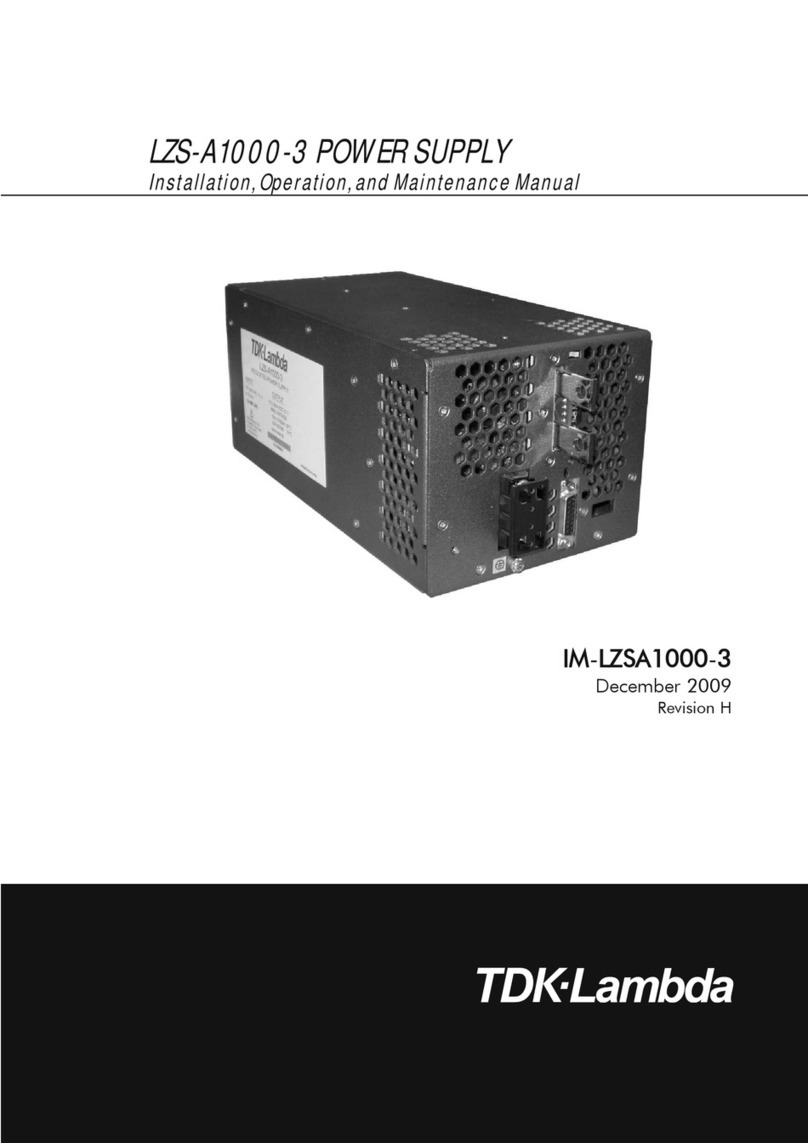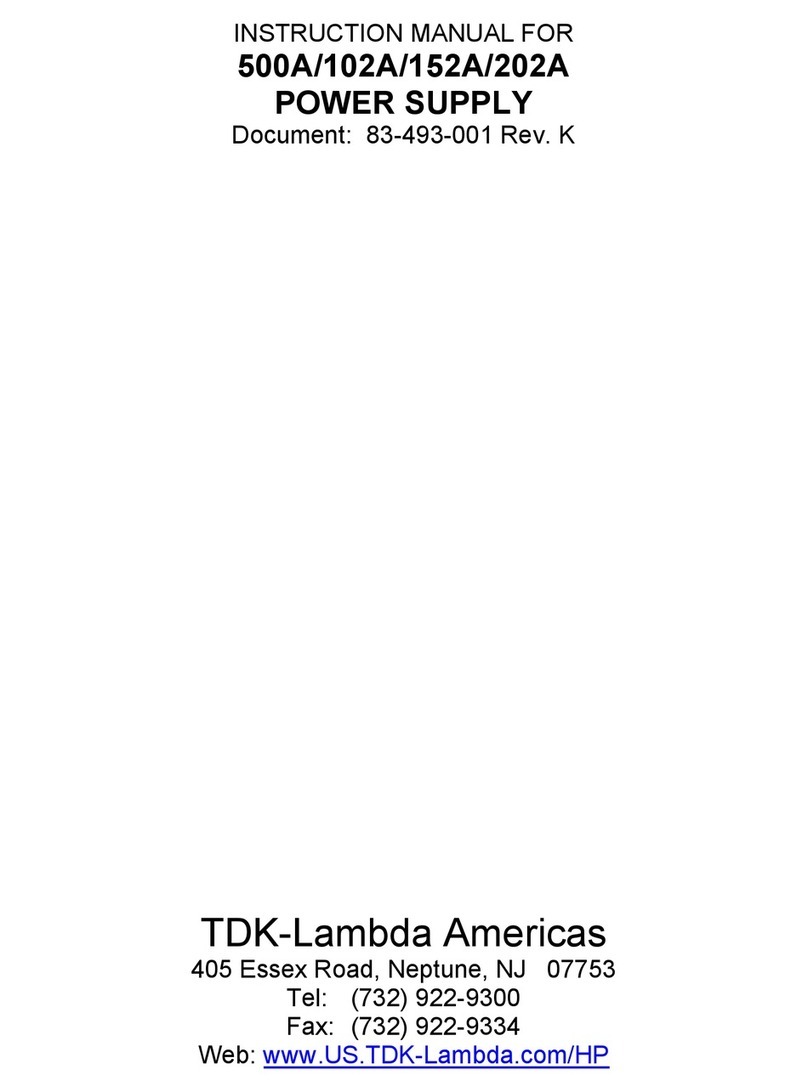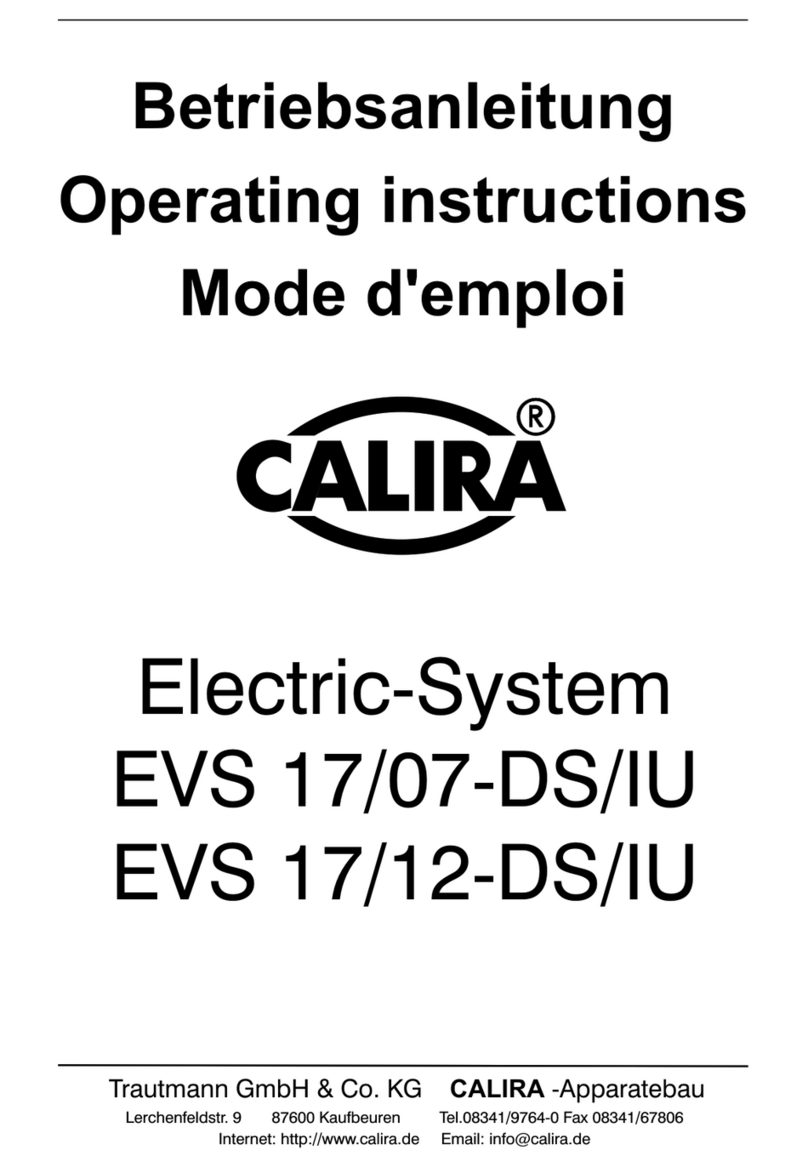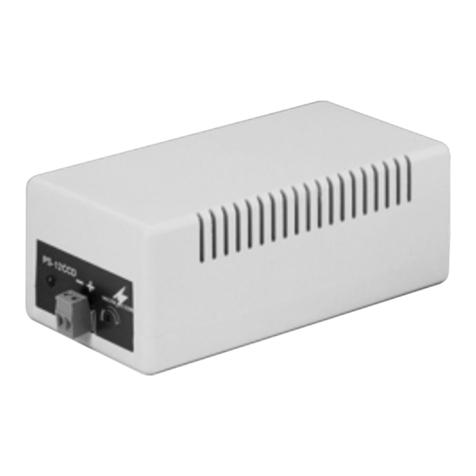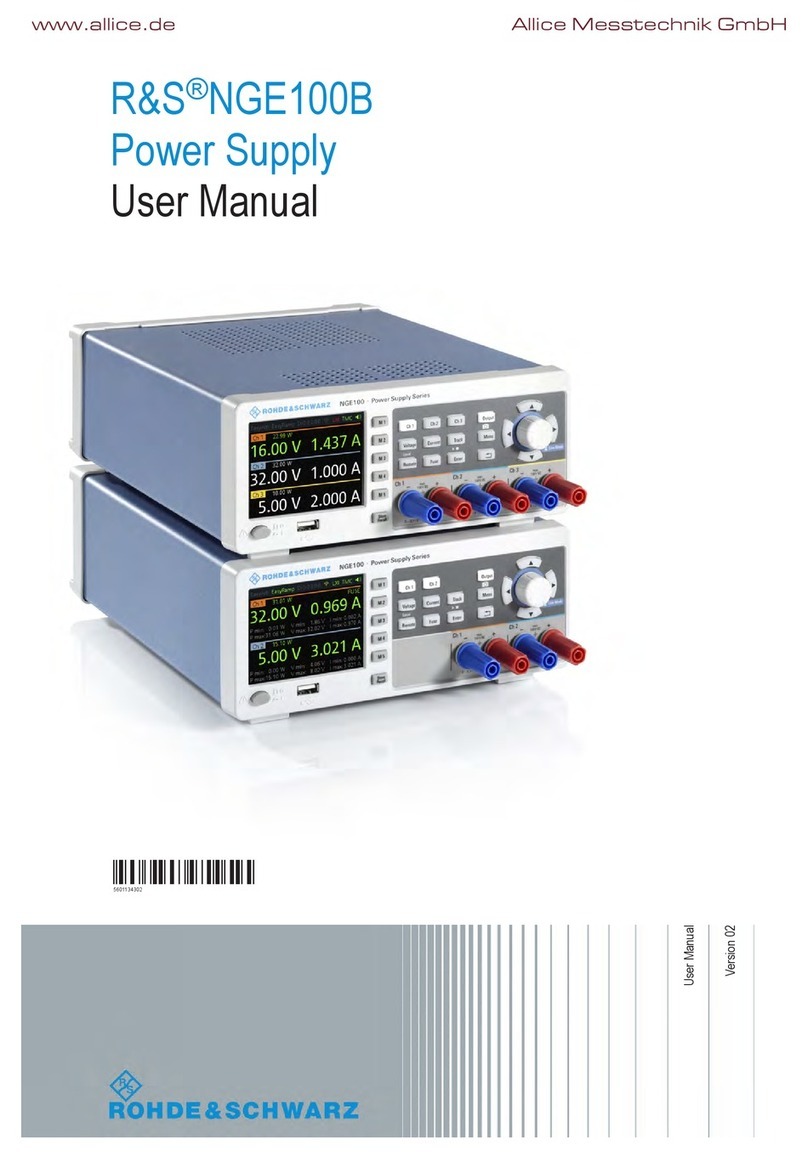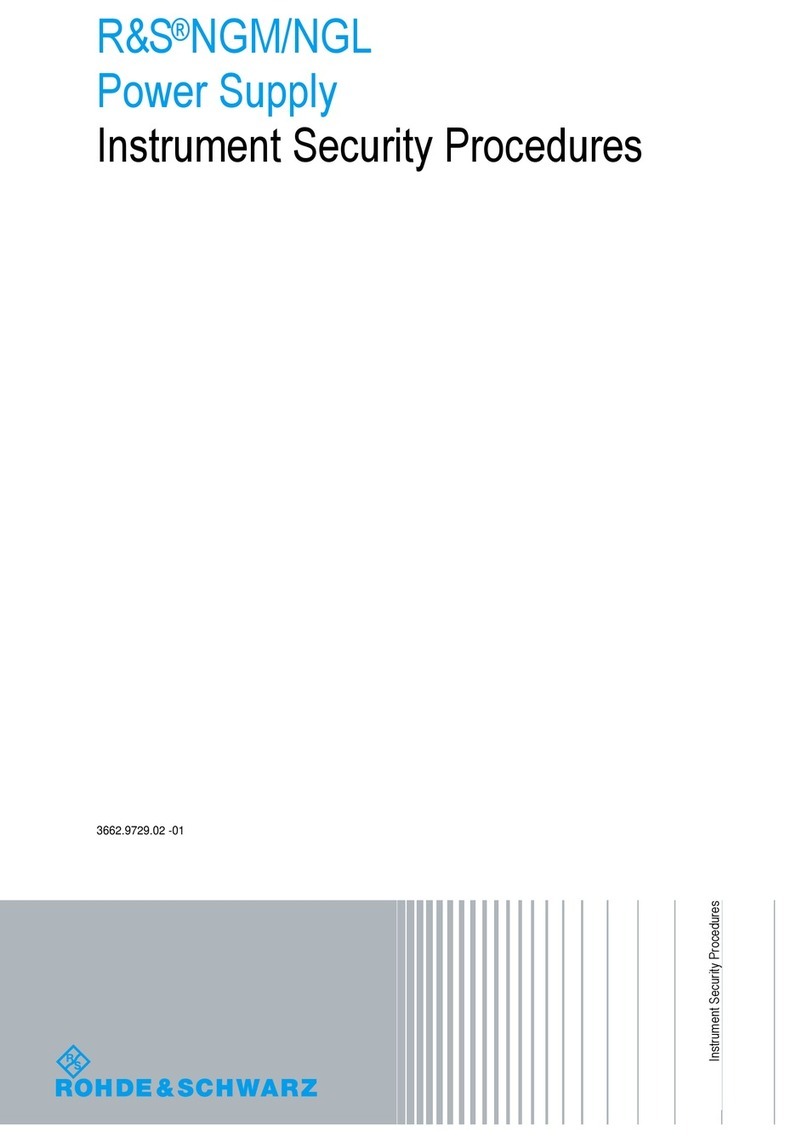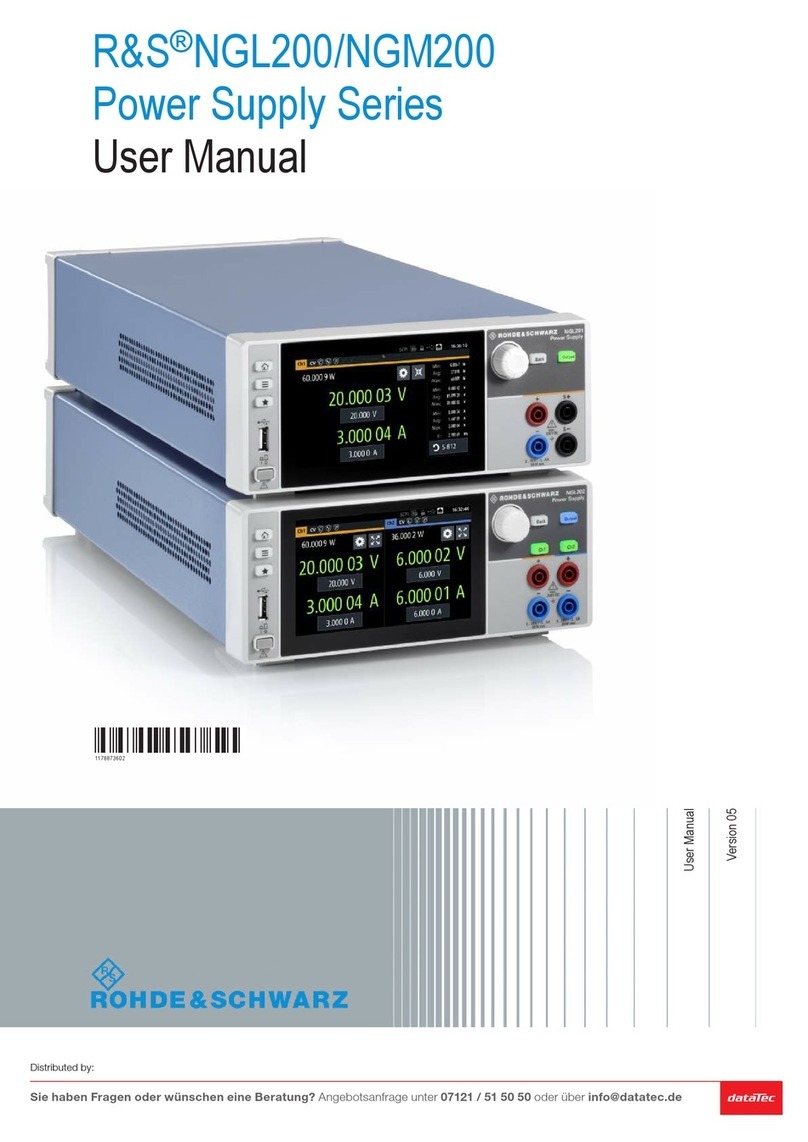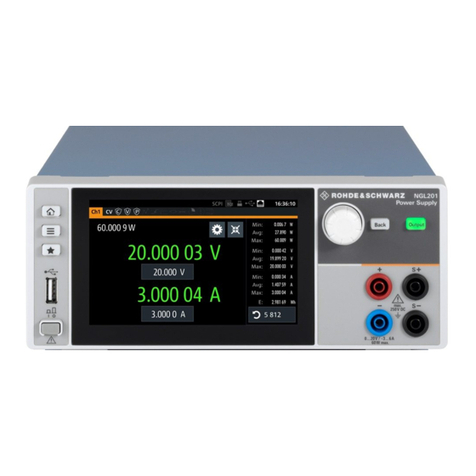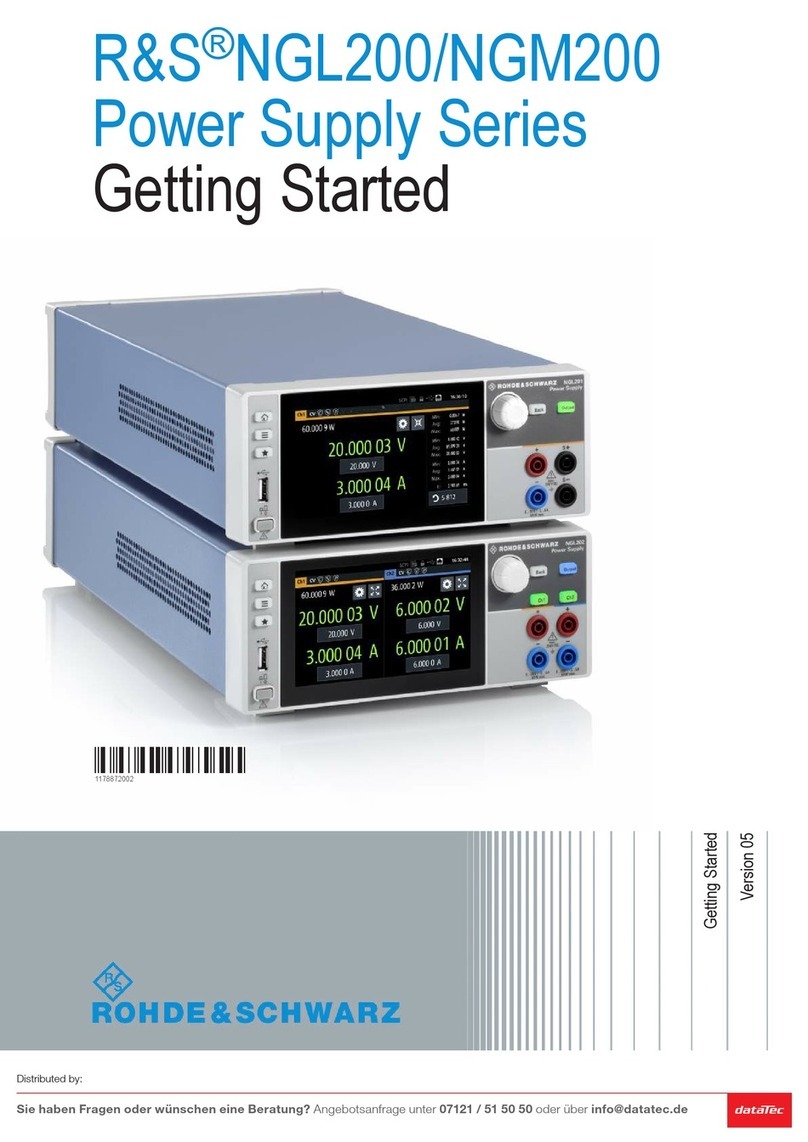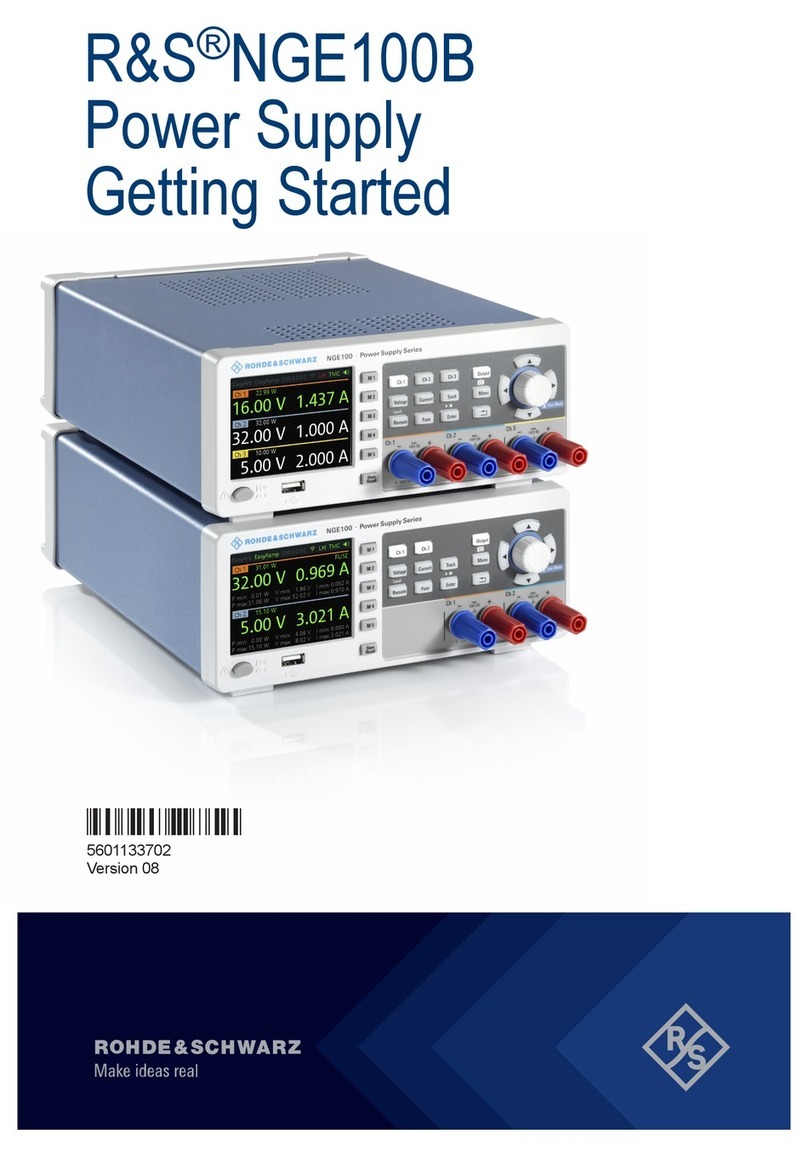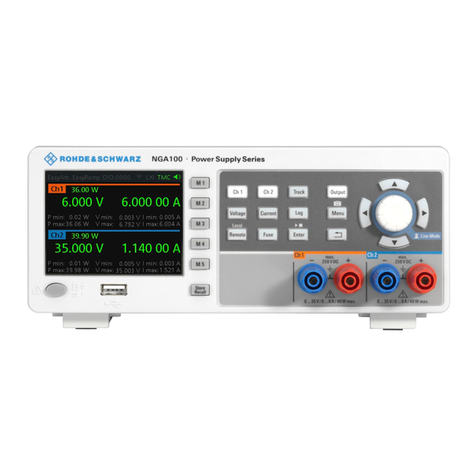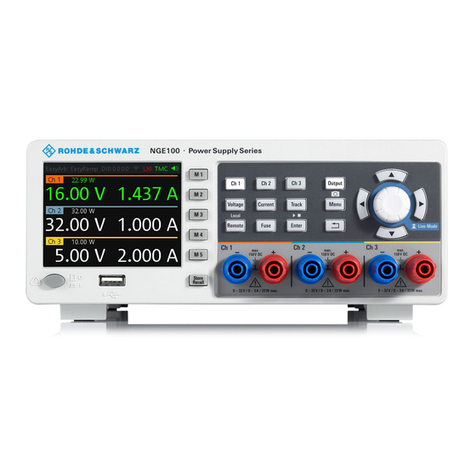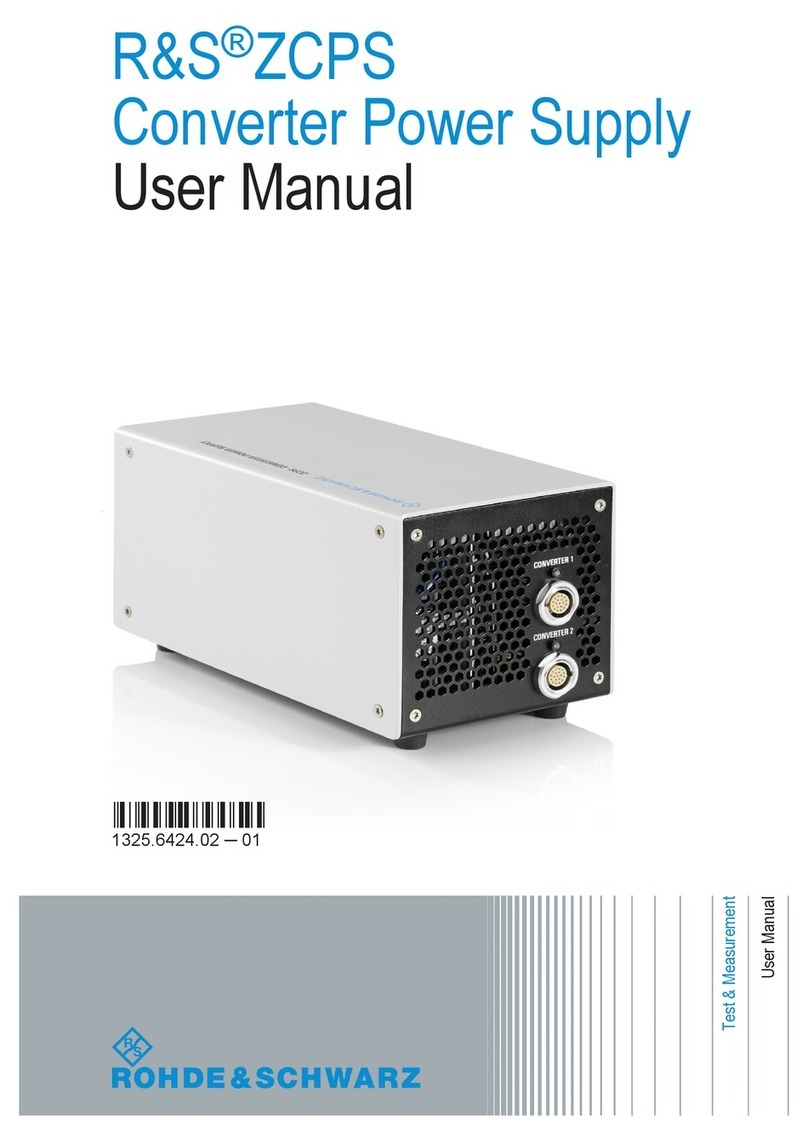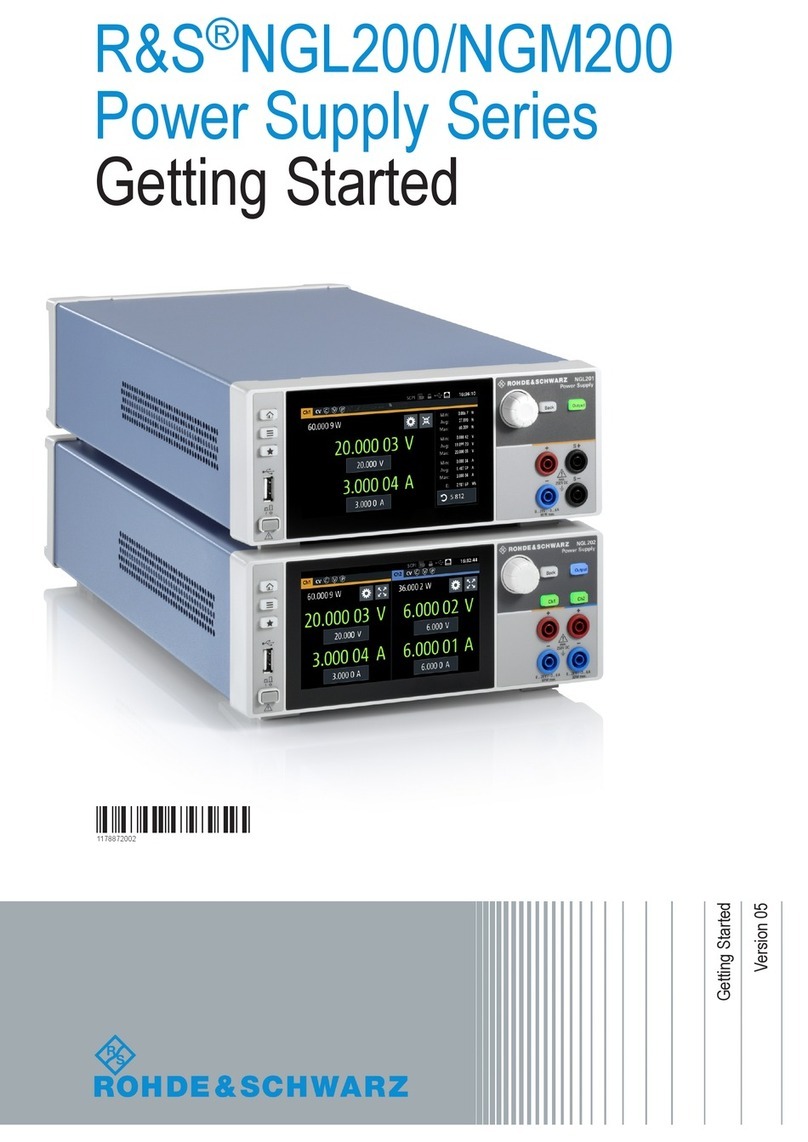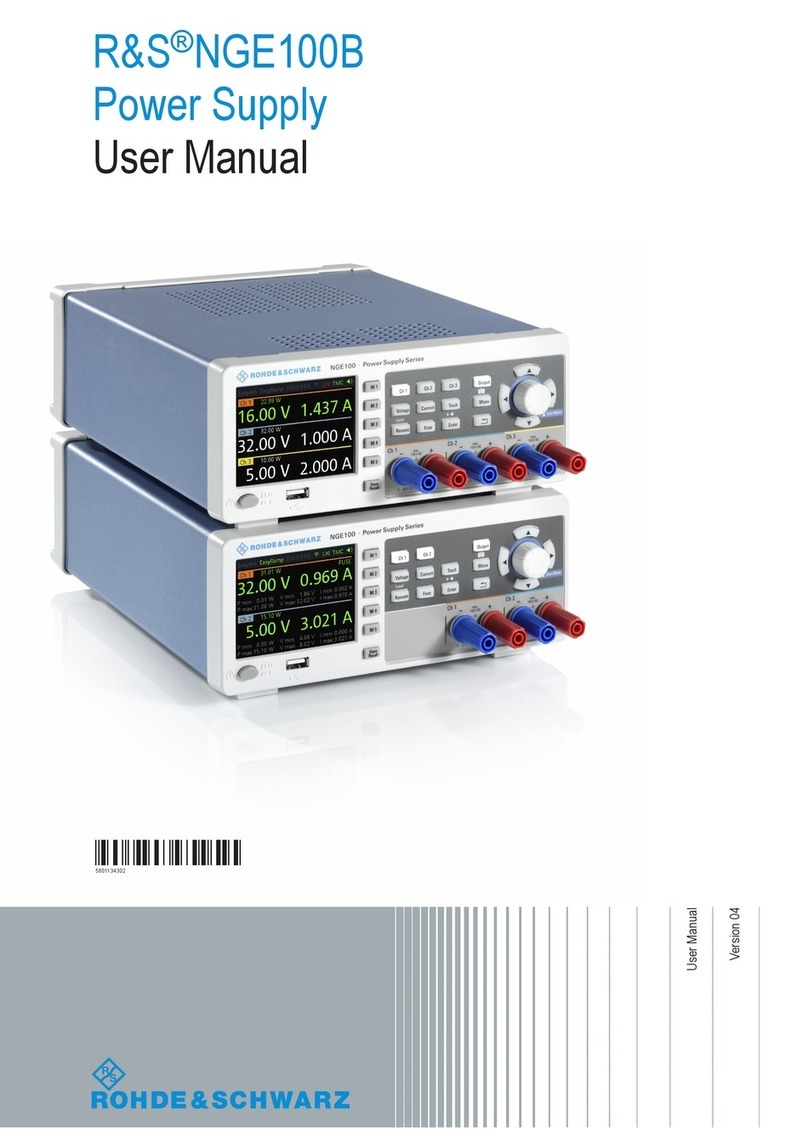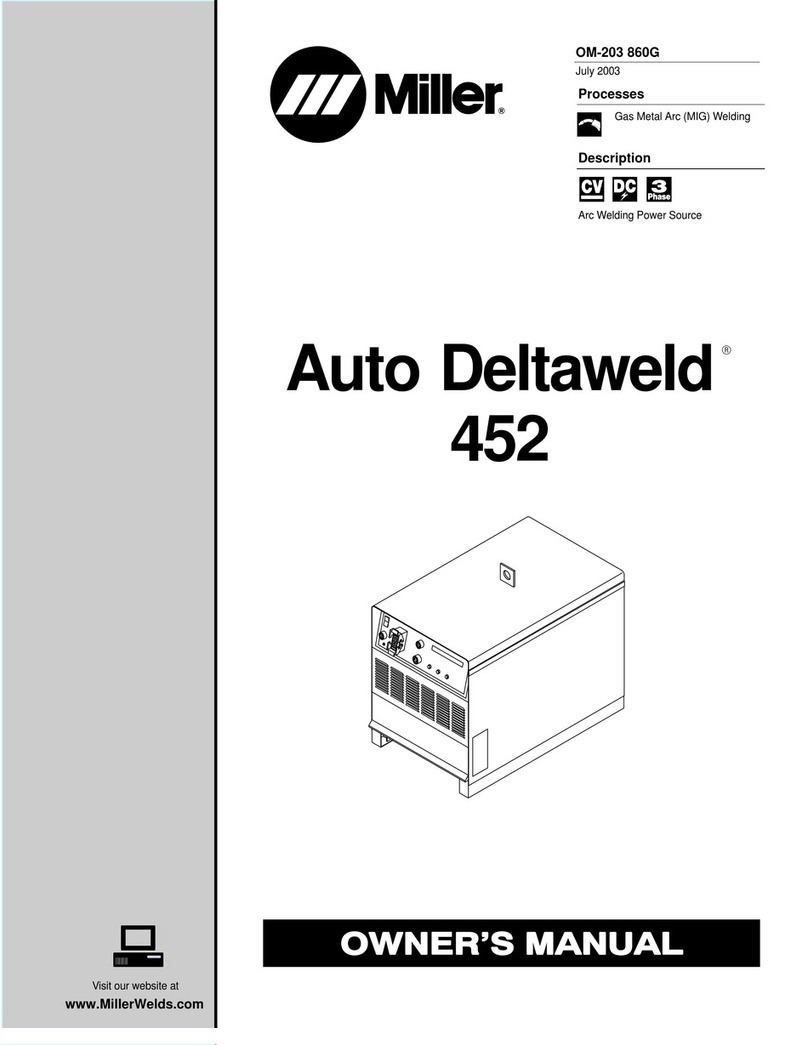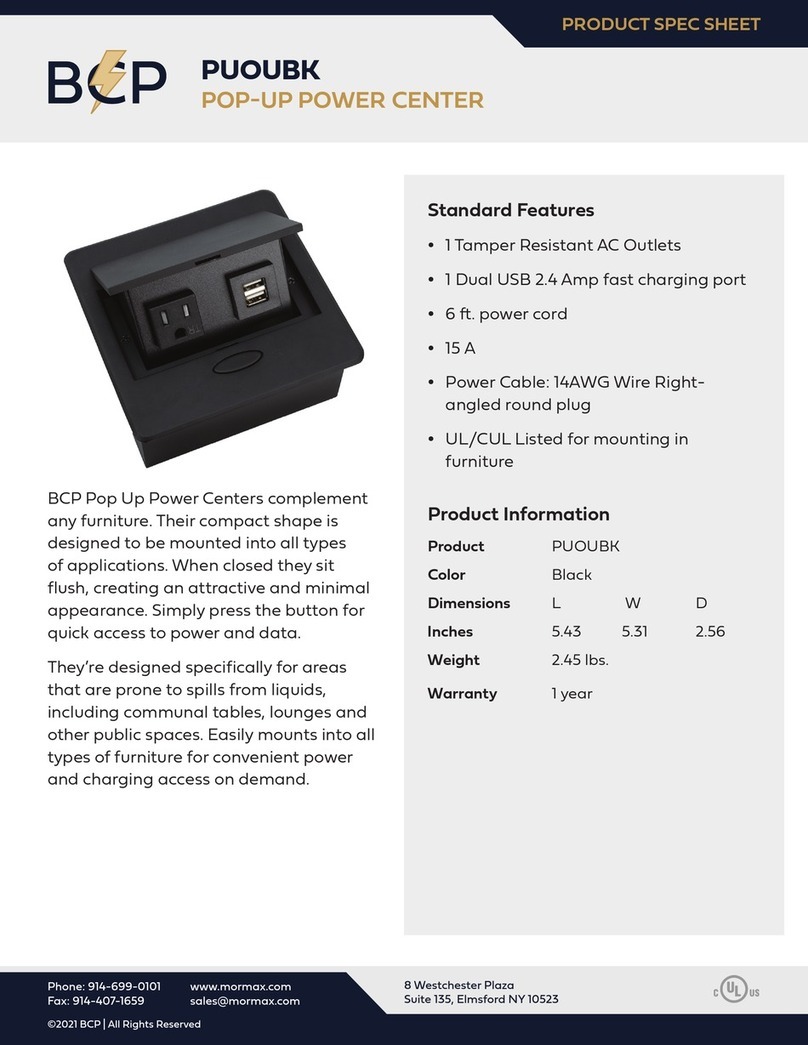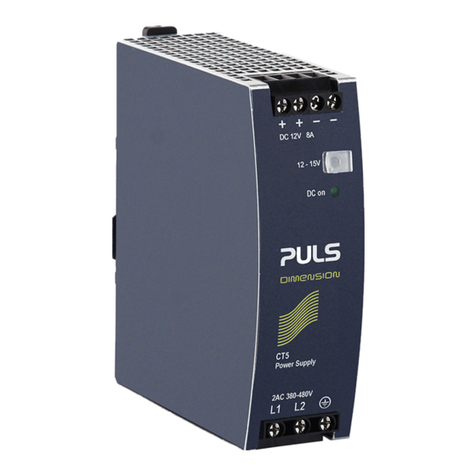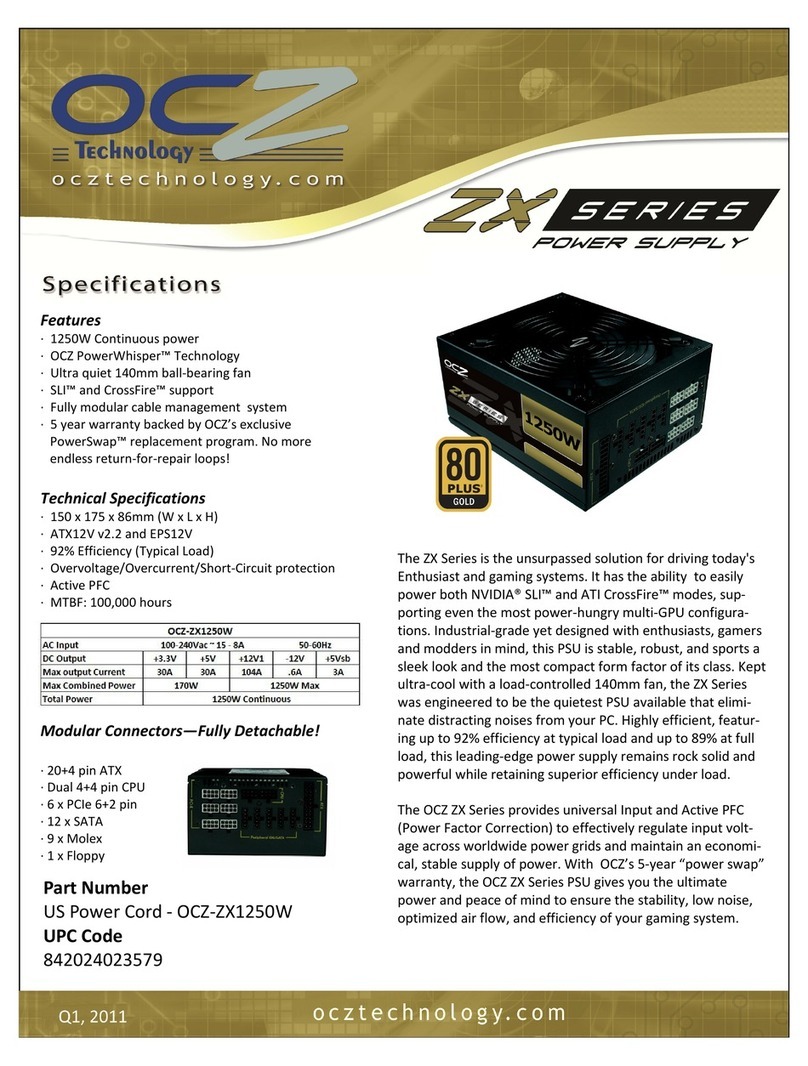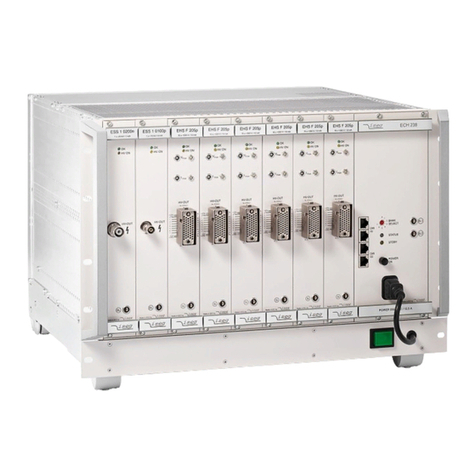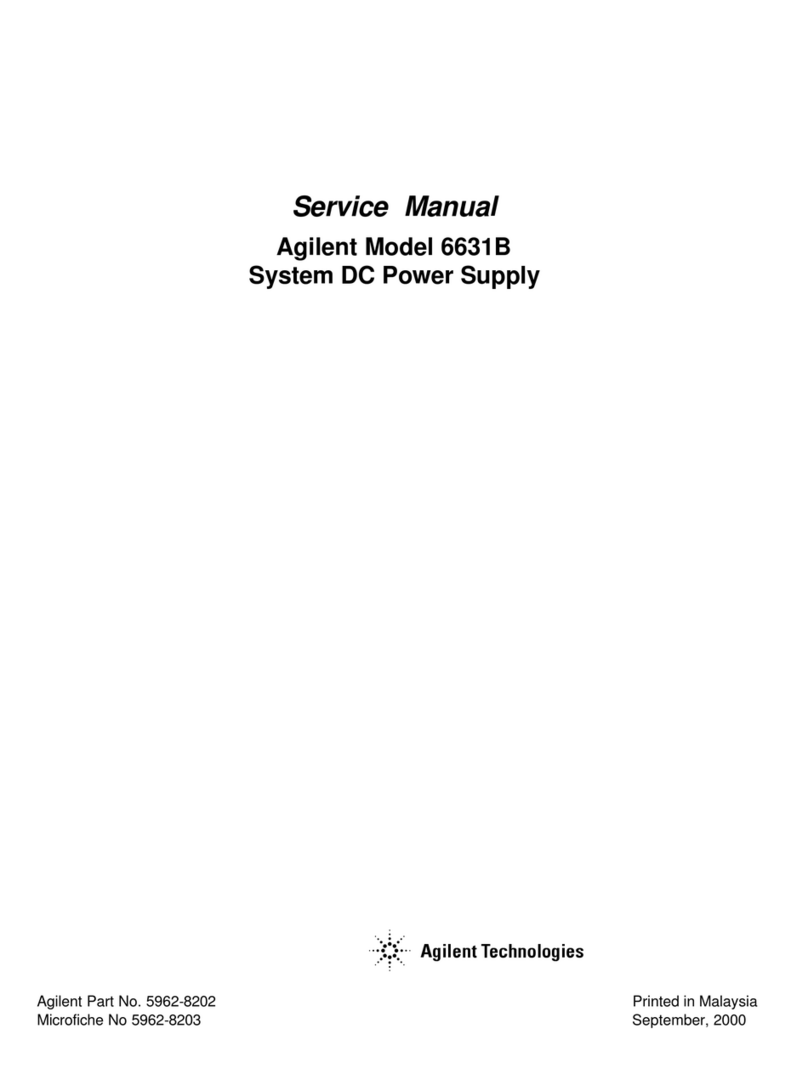
Contents
R&S®NGL200
5User Manual 1178.8736.02 ─ 02.01
6.3.3 Over Power Protection (OPP)....................................................................................... 47
6.3.4 Safety Limits..................................................................................................................48
6.4 Advanced Features..................................................................................................... 49
6.4.1 Arbitrary.........................................................................................................................49
6.4.1.1 Arbitrary Editor.............................................................................................................. 51
6.4.2 Ramp.............................................................................................................................53
6.4.3 Digital I/O...................................................................................................................... 54
6.5 User Button Key.......................................................................................................... 59
6.6 Screenshot...................................................................................................................60
6.7 Data Logger................................................................................................................. 61
6.7.1 CSV Settings.................................................................................................................62
6.8 File Manager................................................................................................................ 64
6.9 Store and Recall ......................................................................................................... 65
6.10 Interfaces..................................................................................................................... 67
6.10.1 Network Connection......................................................................................................68
6.10.1.1 LAN Connection............................................................................................................ 68
6.10.1.2 Wireless LAN Connection............................................................................................. 70
6.10.2 USB Connection............................................................................................................71
6.10.3 GPIB Address............................................................................................................... 72
6.11 General Instrument Settings...................................................................................... 73
6.11.1 Licenses........................................................................................................................ 73
6.11.2 Appearance Settings.....................................................................................................75
6.11.3 Sound Settings..............................................................................................................75
6.11.4 Date and Time...............................................................................................................76
6.11.5 Device Information........................................................................................................ 77
6.11.6 Update Device...............................................................................................................77
7 Remote Control Commands................................................................79
7.1 Common Setting Commands.....................................................................................79
7.2 System Settings Commands......................................................................................82
7.3 Display Commands.....................................................................................................84
7.4 Trigger Commands..................................................................................................... 85
7.5 Configuration Commands.......................................................................................... 85
7.5.1 Channel Selection......................................................................................................... 85


